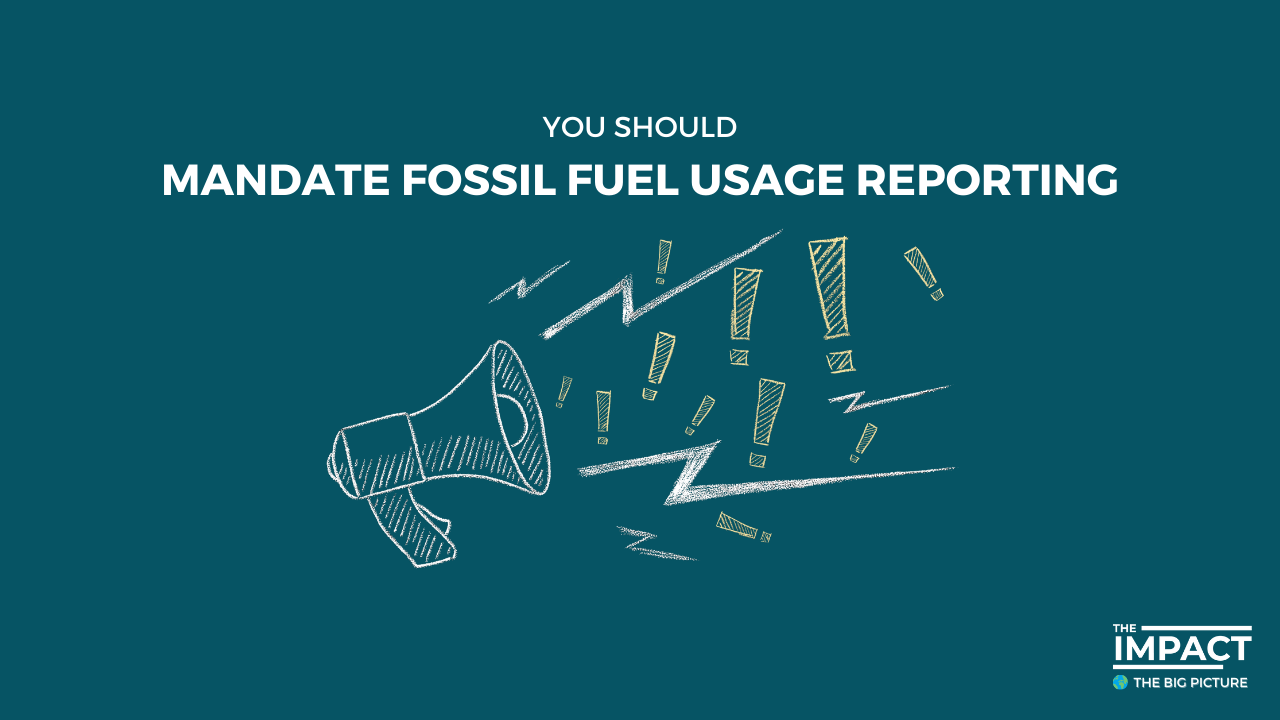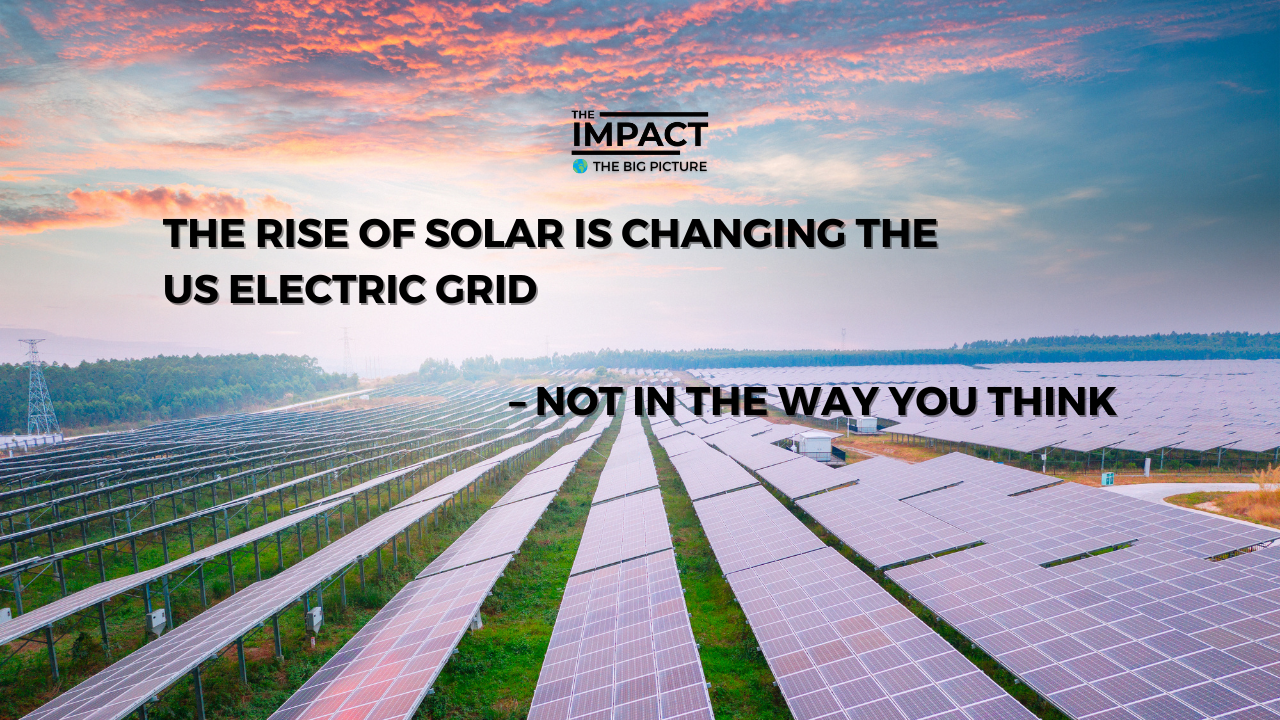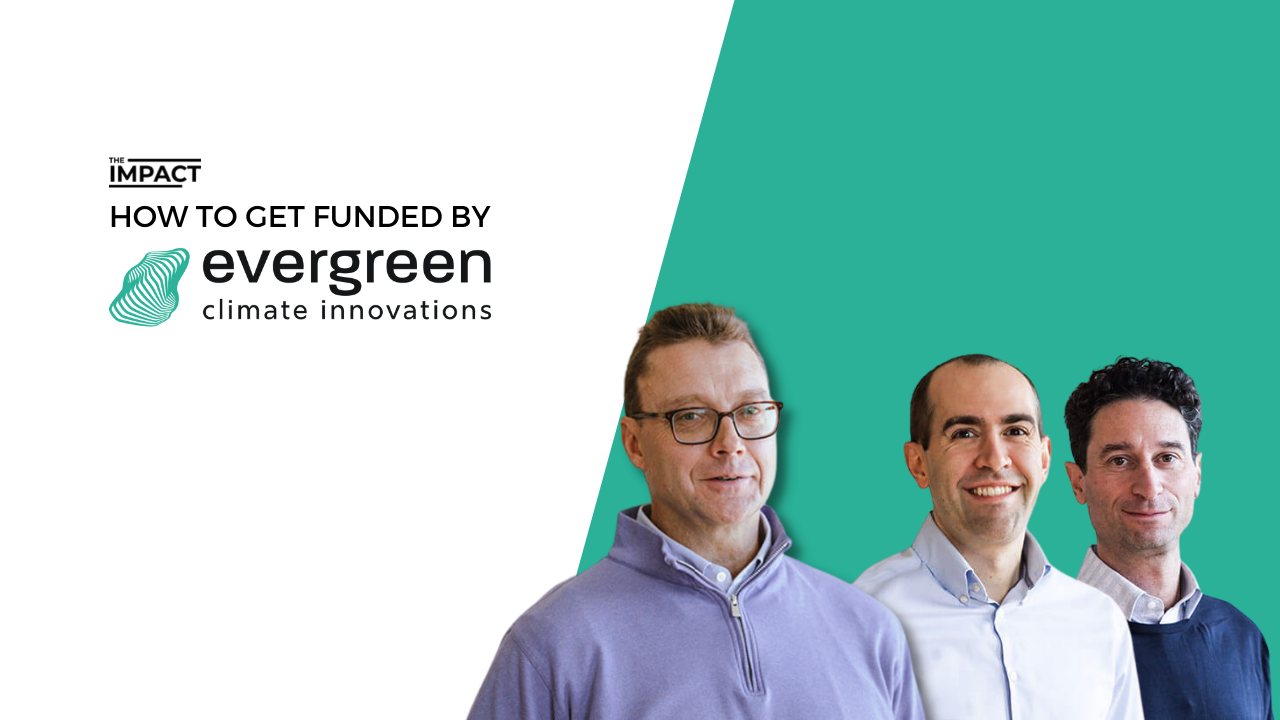🤔The SEC Climate Disclosure Rules are a big deal…If you haven’t been staying up to date on them we got you covered in this week’s newsletter.
– Stephanie Zulman & Swarnav S Pujari
PS. It is hugely helpful if you forward this email to a friend and let them know where they can subscribe (hint:it’s here).
THE TL;DR 💨
📈 Growth Lessons That Helped EnergySage Get Acquired By Schneider Electric
- How channel partners enabled EnergySage to beat out other marketplaces
- Learn exactly what values it took to take EnergySage through hypergrowth
✍🏽 How To Talk To The SEC About The Proposed Climate Disclosure Rules
- The Securities and Exchange Commission recently announced rules that – if enacted – would require disclosure of: Climate-related risks to the business; Direct and indirect emissions from fossil fuel use
- Write to the SEC yourself by emailing comments to: [email protected]
☀️ Solar Is Changing The US Electric Grid – Not In The Way You Think
- We need to prioritize building a “personalization layer” between utilities and energy consumers to enable grid infrastructure renovation plans to truly reduce 40% of the US total carbon emissions
- The companies that are winning in the energy space are already prioritizing this “personalization layer” to win customers and decarbonize the grid rapidly – with the support of utilities and the PUC
💰 Evergreen Addresses The Capital Gap For Startups In The Midwest
- Evergreen Climate Innovations invests in Seed stage startups developing innovative solutions with the potential to make outsized climate impact
🎙️ THE GREEN ROOM
Growth Lessons That Helped EnergySage Get Acquired By Schneider Electric

Vikram is the founder of EnergySage and he just sold his company to Schneider Electric. In this episode we dig into how the company culture he established and his non traditional journey helped him explode in growth in 2016.
Check out and subscribe to our Youtube Channel for future episodes!
🌎 THE BIG PICTURE
How To Talk To The SEC About The Proposed Climate Disclosure Rules
By John Conor Ryan • is a physicist and business analyst, working on macro-economics of the end of fossil fuels.

The Securities and Exchange Commission recently announced rules that – if enacted – would require disclosure of:
- Climate-related risks to the business
- Direct and indirect emissions from fossil fuel use
These would be hugely important in moving toward quantifying problems and enabling solutions that decarbonize our economy. Demanding good data on fossil fuel usage from the biggest users is what will enable accountability in solving our energy supply problems.
Some of you asked: What can you do? How do you do it? What’s the deadline? We’re here to tell you: a lot and it’s important (and by the 17th of June, but don’t wait).
What you can do
- Write to the SEC yourself by emailing comments to: [email protected]
- Keep it really simple. A few bullet points only.
- Say who you are and why you write.
- Read a few examples of SEC NPRM (Securities and Exchange Commission Notice of Proposed Rule-Making) responses and use them as the basis. (We’ll offer our own soon.)
- Imagine that you have their attention for 20 seconds. No more; say what you have to say and make the reader nod. Or smile.
- Find an environmental policy group and support their submission. Co-sign it. Help them write it. Help it get public attention. Write to the SEC and endorse a well-argued submission.
- Write to your congressional representative and ask them to support this. Present it as aligned with their interests: environmental, for example, or in presiding over well-ordered markets.
- Connect your points to the SEC mission: “to protect investors; maintain fair, orderly, and efficient markets; and facilitate capital formation. The SEC strives to promote a market environment that is worthy of the public’s trust.” Uniform reporting on fossil fuel risk aligns with this mission.
- Refer to analogous rules being adopted elsewhere.
- Write in specific opposition to filings against the rules. (See the end of this piece.)
Why you should write to the SEC
Because the forces that will oppose the SEC rules are bigger, better organized, and have more money. The oil and coal industry. Some right-wing groups that want a kleptocratic economy (meaning: they can syphon off funds for themselves if there are fewer rules). Financial institutions that oppose any rules.
Because we’re right. Not just on this subject, fossil fuels, but on all activities that pose existential risk to humanity. Solving problems created by industry, by governments, and by society requires that problems be acknowledged and quantified. The SEC rules, imperfect though they may be, as proposed or as implemented, are a big step toward both acknowledging that fossil fuel use is a systemic risk to the economy and emphasizing the importance of solutions.
There aren’t many places where our individual voices can make a difference, where we each take a role in moving aside the colossal strength of the fossil fuel giants. This is one such place. This opportunity arises: we must answer.
Writing is a relatively easy way to advocate for change, with potentially important impact. Do it, build the muscle of doing it, and persuade others to do similarly. To understand how you and we can change the narrative, look at the arguments made a year ago on the same subject. Fossil-fuel proponents argued that the rules were outside the SEC’s scope. This shows what we must do: argue carefully, thoughtfully in support of fair rules.
Take the fight to the opposition
To understand how creepily dishonest specific responses to the SEC call can be, take a moment to look at a response posted at The City Journal, a right-wing, New York-based magazine that aims to participate in public policy decisions, nationwide. There, a submission attacks the proposed rules in a piece entitled “Mission Creep at the SEC: The agency’s proposed climate-disclosure requirements overstep its traditional role.” Surely, the worst is yet to come, but already this deploys all manner of Serious Words in disingenuous support of nonsense.
Among its logical fallacies:
- Deflection and trivialization: By comparing climate change – where the collective actions of most humans and organizations are causal – to things out of our control: “thermonuclear conflict, solar flares, or viral pandemics” (paragraph 7, if you’re reading along). Grow up. Climate risks are real and uncontained. We’re to blame. Quantification is important. Just do the work.
- Misleading: It argues (final paragraph) that gathering the data would be an extra cost with inadequate benefit. The truth is big companies whose operations consume lots of fossil fuels care about it a lot, and have staff and consultants gathering data and crunching numbers to lower their cost. Reporting fuel use would take minimal extra costs, and the benefit to investors and to society would be great. (Firms with insignificant impacts would be exempted.)
- Non-sequitur: It argues (again, final paragraph) that having the data made public would hinder the creation of orderly markets. Really? I mean, that’s just nonsense. Having the data public, and uniform, is essential to orderly markets.
The good news about this is: the arguments are so evidently false that they can be debunked. The good news is also this: you can help doing it.
We can and must. That’s why we must write.
🌎 THE BIG PICTURE
Solar Is Changing The US Electric Grid – Not In The Way You Think
By Swarnav S Pujari • is a Growth/GTM consultant with climate startups, an angel investor and the Appointed Chairman of the Yorktown Climate Smart Communities Task Force - and has extensive growth and policy experience.

To decarbonize the US electric grid, the key focus should not be on wide-scale decentralization of energy production and management.
We need to prioritize building a “personalization layer” between utilities and energy consumers to enable grid infrastructure renovation plans to truly reduce 40% of the US total carbon emissions.
To better understand this, we need to investigate why utilities exist and the incentives of the 250 people in the US that control our grid infrastructure. From there we can understand the real driving force behind the trend of Distributed Energy Resources (DERs) and Virtual Power Plants (VPPs). Once we have context on those two critical areas, you’ll see how a “personalization layer” is the real opportunity realm for climate entrepreneurs looking to build a solution that drives global impact and financial returns.
Contrary to popular belief, utilities exist to maintain — not renovate
We’ve all been frustrated when our power goes down and especially so when it goes down for extended periods of time. During those moments we turn to the internet to fuel those frustrations about how unreliable utilities really are.
Rightfully so, but what we need to realize is that utilities exist purely to ensure reliability across the grid to the best of their ability – regardless of which supplier you choose to use. The public utility model is a quasi-public-private partnership that was fundamentally started back in the 1800s and exists to ensure energy consumers get reliable and nearly at-cost electricity by rate-basing any new infrastructure needed.
This forced commoditization and control through the Public Utilities Commission (PUC) has spurred huge economic growth since then, but with changing energy needs we need a serious revamp of the infrastructure we decided on when Edison and Tesla were going at each other.
A lot of our anger is misdirected, as asking utilities and broadly the PUC to solve our modern-day energy needs is like asking a monkey to become a world-class swimmer as opposed to doing what it’s best at – swinging from trees.
Utilities and the PUC’s purpose is to ensure electricity rates are near at-cost and reliable with the infrastructure architecture we’ve laid.
DERs, VPPs, and Solar broadly serve an energy consumer’s specific needs and goals
We have to seek innovative infrastructure solutions elsewhere, which has led to the rise of solar on our roofs and the movement of Distributed Energy Resources (DERs) & Virtual Power Plants (VPPs). Effectively, we’ve moved towards just building our own power plants and backup power to ensure our rapidly growing energy needs are met in a cost-effective way.
A lot of this is thanks to the solar ITC creation in 2006 by Bush and then extended and expanded by Obama in 2009.
Due to this, people and companies in areas where energy is unreliable began to invest in solar + storage systems. Naturally, adopting any type of energy efficiency solution or solar is always justified with the financials but in reality, it’s an emotional purchase caused by changing energy needs and poor experiences.
During this buying process – where you’re naturally maintaining your anger against the utility you buy from – you get personalized system sizing and solutions from local solar installers who thoroughly understand your specific energy needs and goals.
The past decade for solar and storage has been huge. Many consumers are buying and even the grid has begun to decarbonize through the installation of large solar systems which are included in utility Integrated Resource Plans (IRPs). The consumer demand here actually influenced a new “Trusted Energy Adviser” role that existed back in the early days of utilities.
There actually was a time when you’d call your local utility to buy things like washing machines!
Today we’re getting a similar experience from solar installers who are customizing solutions specific to your homes. Communities are getting a similar experience from EPCs (Engineering, Procurement, Construction) when getting microgrids deployed – which falls under the DERs bucket.
This entire tailoring and personalization process is actually something that requires capturing data on your energy usage and understanding your upcoming purchases – like buying an EV or swapping your HVAC over to a heat pump. Once you have a tailored solution for your home or community (depending on what scale you’re serving regionally) you only then go to the utility to interconnect your system into the wider grid.
These kinds of tailoring and personalization efforts end up capturing a ton of localized data on individual homes. Everything from HVAC usage, energy usage profiles, and patterns can provide an installer the ability to identify efficiency upgrade opportunities and energy resilience-building upgrades that are also climate-friendly, which resolves the emotional need that may have led you down that path.
To decarbonize the US grid we need to provide region-specific proposals personalized to the region’s specific needs
Now that we understand that utilities and the PUC will do what enables them to both maintain reliability across the grid and provide electricity at a near at-cost rate AND understand that the rise of DERs (solar + storage) is due to the hyper-personalization of the needs/expectations of the consumer – be it residential or commercial – we can see a link between personalizing infrastructure plans and having the utility + PUC of that region keeping that infrastructure running and affordable to customers.
Companies and startups today are missing the opportunity by going to utilities in the hopes that they play the role of the “Trusted Energy Adviser” when in reality they should become champions in concentrated regions where they either have a hardware or software solution that serves reliability or climate-focused concerns of consumers.
The goal for companies should be to find any way possible to aggregate a statistically significant amount of data around energy usage and energy efficiency profiles of individual homes and commercial properties – behind the meter. The companies that pull this off can suddenly tailor experiences just like our experiences and recommendations get tailored to on platforms like YouTube, LinkedIn, and Twitter.
Being able to factor in and predict energy consumption and build a plan specific to a region allows these companies to be included in proposals that turn communities into microgrids and are largely supported by renewables.
These companies then can participate in the long-term revenue these new infrastructure developments can kick off in both deregulated and regulated states. All it takes is being that personalization layer for a community of any size and coming to a utility with a proposal that they can buy, own and operate (usually). They can then take that proposal and get the PUC to approve it to be rate-based for the consumers in that region.
Here are examples of this beginning to emerge
The companies that are winning in the energy space are already prioritizing this “personalization layer” to win customers and decarbonize the grid rapidly – with the support of utilities and the PUC.
The beauty of this is that new business models are being opened up by policy shifts like FERC 2222 to enable a transactive grid where energy can be bought and sold from your neighbors. Beyond that companies are working on solving different parts of the data problem by building affordable and high accuracy sensors to understand appliance level energy consumption at homes and commercial buildings.
Solar installers are almost becoming advocates and community leaders that understand the future buying behavior of consumers in that region. Startups are working on optimizing energy usage throughout the home/buildings and capturing data on how, when, and where energy should be consumed to provide an optimal usage profile.
Utility-scale EPCs are now using that data and information to better design and architect solar projects and utilities are using these various data streams to make better buying decisions to ensure they can meet their north star metric of reliability. While the PUC is using policy levers to ensure consumers get the renewables they want by creating new markets within the grid to make the financials of DERs more attractive.
Fundamentally, solar and the broader sustainability movement paired with the advancements in IoT solutions, AI, connectivity, and EVs have ushered in a full transformation of the grid by opening up a new “personalization layer” for new companies to come in and play a role in rapidly decarbonizing the grid.
In turn, enabling us to reduce the US’ carbon emissions by 40% and win a small battle against climate change.
📚 EDUCATION // 💸 VC DEEP DIVE
Evergreen Addresses The Capital Gap For Startups In The Midwest
By Daniel Kriozere • is a Principal at C3, Tech Scout at For ClimateTech, and Venture Scout at Prithvi - and has an extensive network within the broader climate investment and startup community.

Evergreen Climate Innovations addresses the capital gap that exists for early-stage climate tech companies. They invest in Seed stage startups developing innovative solutions with the potential to make outsized climate impact.
Fund Snapshot:
- Stage: Pre-Seed to Seed
- Check Size: $200K-300K
- Geography: US, Greater Midwest region
- Lead/Follow: Flexible – typically invest via convertible note; can also lead or participate in equity rounds
- Revenue/Valuation Thresholds: We seek to deploy catalytic capital in high-risk/high-impact climate tech startups. No stage of development is definitively “too early”, especially when it comes to hard-tech, though they like to see some early market traction for software investments.
Why was the fund created? What do the LPs/GPs deeply believe in?
Evergreen Climate Innovations’ (Evergreen) 501vc® Seed Fund was created to address the capital gap in early-stage climate tech funding. This gap is particularly severe in the Midwest region of the US – according to Pitchbook only $16.5 million was invested in climate/cleantech seed rounds in 2021 compared to $251 million invested in West Coast companies and $147 million invested in the Northeast/NYC area.
Evergreen’s unique 501vc® investment model combines the activities of a seed fund with the legal structure of a non-profit organization, which allows them to bear a little more risk than the market and provide patient, catalytic capital to entrepreneurs at the earliest stages of development.
The fund doesn’t have any LPs. Instead, they have donors. Their fund is capitalized with philanthropic dollars, and the fund is structured as a revolving evergreen fund – any returns generated by investments are recycled back into the fund and redeployed. Donors believe in Evergreen’s philosophy of “compounding impact”: Evergreen won’t deploy donors’ money just once; rather, they put their money to work again and again via their high-impact revolving fund.
What is a contrarian idea Evergreen Climate Innovations believes to be true?
The lack of early-stage climate tech funding in the Midwest is not for a lack of climate tech innovation in the region. Innovation in the Midwest is just not as geographically concentrated as it is in Silicon Valley or Boston because it is more spread out. There’s remarkable innovation brewing all over the region, from Argonne National Laboratory in Lemont, Illinois to The Battery Lab at the University of Michigan and from the Ag Startup Engine in Ames, Iowa to HG Venture’s Accelerator in Indiana. These are just a few of the innovation nodes throughout the region pumping out a wide range of high potential technologies and startups.
Also, according to Pitchbook, Seed stage valuations in the Midwest were 49% lower in 2021 than the West Coast and 44% lower than the Northeast/NYC.
What domains in climate tech does Evergreen Climate Innovations have the greatest expertise in?
Evergreen is focused broadly on climate-tech and environmental sustainability, seeking investments in climate mitigation, climate resilience, and natural resource conservation. Having made investments in 38 companies over the past 8 years, they’ve developed a wide range of expertise across many industries including energy, transportation, agriculture, water, and materials, among others.
What type of portfolio support does Evergreen provide?
Evergreen is a hands-on investor, working closely with portfolio companies to identify and execute a clear, well-funded path to market. Beyond the money invested, the team provides invaluable resources and opportunities that arise from their extensive network throughout the climate tech innovation ecosystem that they have spent over a decade cultivating.
More specifically, Evergreen runs a “Structured Fundraising” process to help portfolio companies raise their first institutional round. Another example is their CEO Summit, an annual leadership seminar that features expert speakers on a wide range of topics while also fostering engagement between their portfolio company founders. These are just a couple examples.
Evergreen also taps into their extraordinary board of directors, investment committee, and stakeholder network to leverage deeper domain expertise when needed. For example, their former CEO and current board chairwoman Amy Francetic, managing partner at Buoyant Ventures, has extensive experience investing in software technologies. And board member and Investment Committee chair Karen Kerr, formerly Executive Managing Director of GE Ventures, has deep domain expertise in industrial and manufacturing innovation.
What is your investment process and timeline? Who do you talk to? How many calls? What kinds of diligence steps (materials)?
Evergreen prefers not to take warm intros. Any startup can submit a pitch deck via the website. They prefer to keep things open and objective on the front-end; they’ve always had strong diversity metrics across the portfolio and believe that’s in large part due to their open-access approach to intaking deal flow.
Evergreen aims to respond within a few weeks as to whether they’d like to go deeper with a company. From there they run a process in which they go deeper as they greenlight a company to each subsequent stage. The team digs into every aspect of the business, assessing what could go wrong, as well as having a very optimistic view of what could go right. They are first and foremost seeking the highest potential impact. However, Evergreen fundamentally believes that meaningful impact will only come with scale, and therefore sound business fundamentals are equally as important as the potential impact promised by a new technology.
In the latest stages of their process, they talk to customers and partners, develop their own 10 year pro-forma financial model, and draft an impact memo and investment memo for Investment Committee prior to a company’s final pitch to their Investment Committee. The process typically takes 3-5 months.
What would make your fund consider deviating from your typical criteria?
Evergreen sticks to early-stage climate tech in the Greater Midwest (roughly Denver to Pittsburgh). Ultimately, they’re looking for investment opportunities where their capital and resources bring additionality to the table. That could mean being the first check into a company, or it could mean bridging a startup from friends-and-family/angel investors to institutional investors. The ecosystem is always evolving and so are they. As more money flows into climate tech, they will keep a close watch on the market and make the necessary adjustments to ensure they’re using their resources to maximize impact.
☕ CONSIDERING A WAY TO SUPPORT US?
Consider donating if you found this newsletter useful. These dollars are used to support The Impact and our writers as we continue to produce research and insights in the space.
✍️ WANT TO HELP US IMPROVE?
How would you feel if you could no longer receive The Impact?
Editors: Stephanie Zulman, Swarnav S Pujari Writers: Daniel Kriozere, John Conor Ryan
If you aren’t absolutely thrilled with The Impact, reply and let us know why. Or you can unsubscribe from all updates by clicking here.
Copyright © The Impact 2021. All Rights Reserved || 19 Morris Ave, Bldg 128, Brooklyn NY 11205

